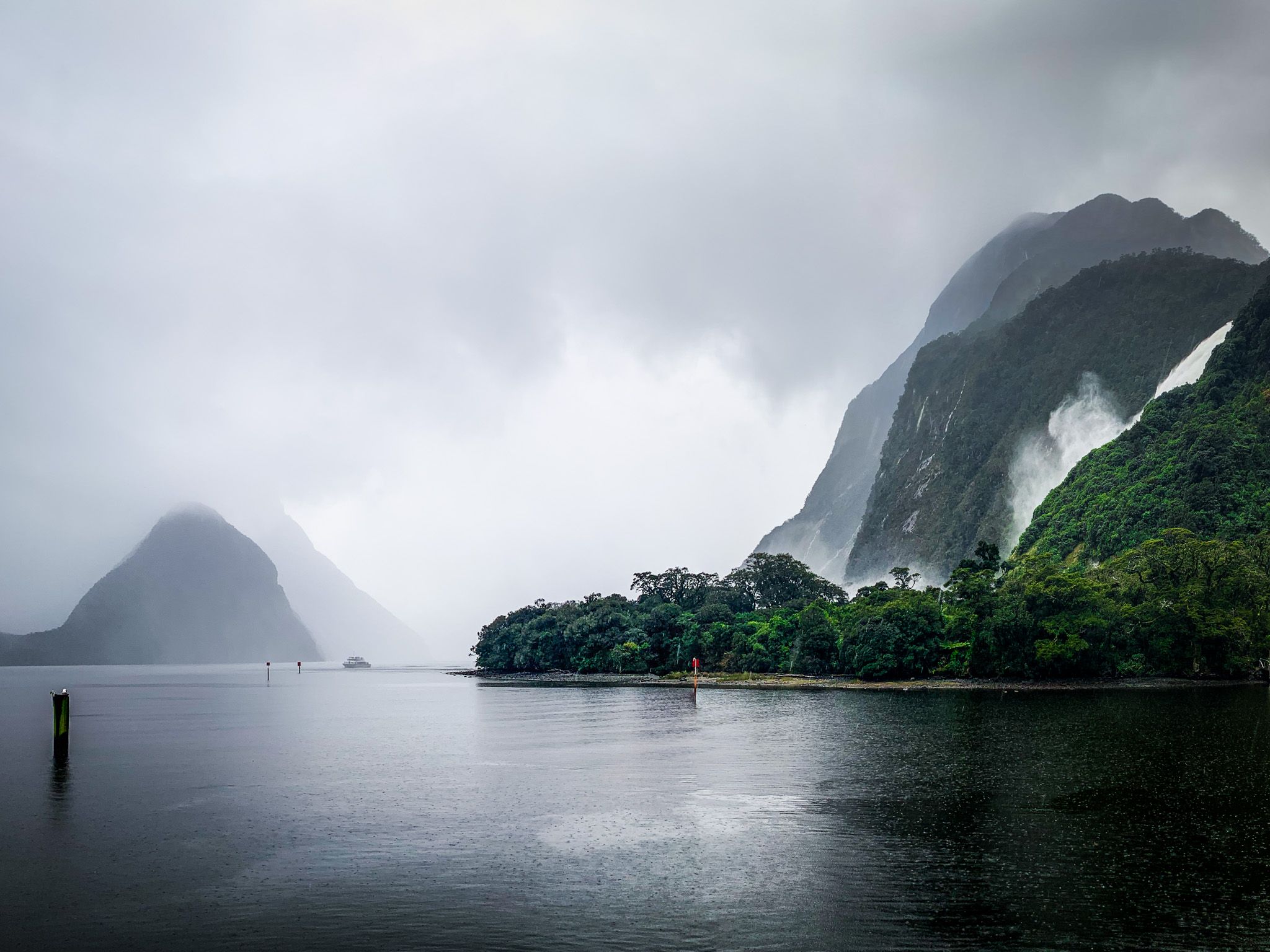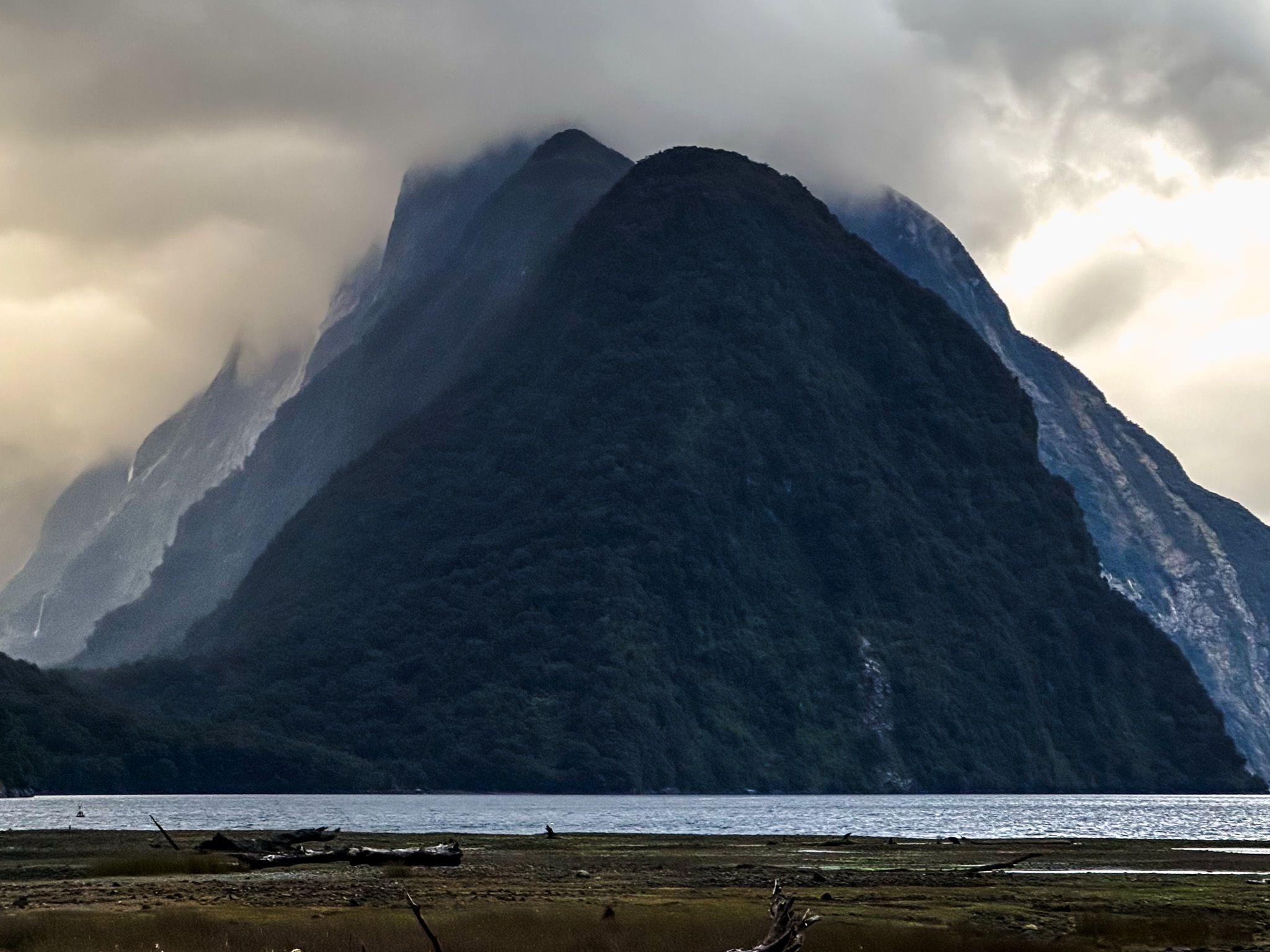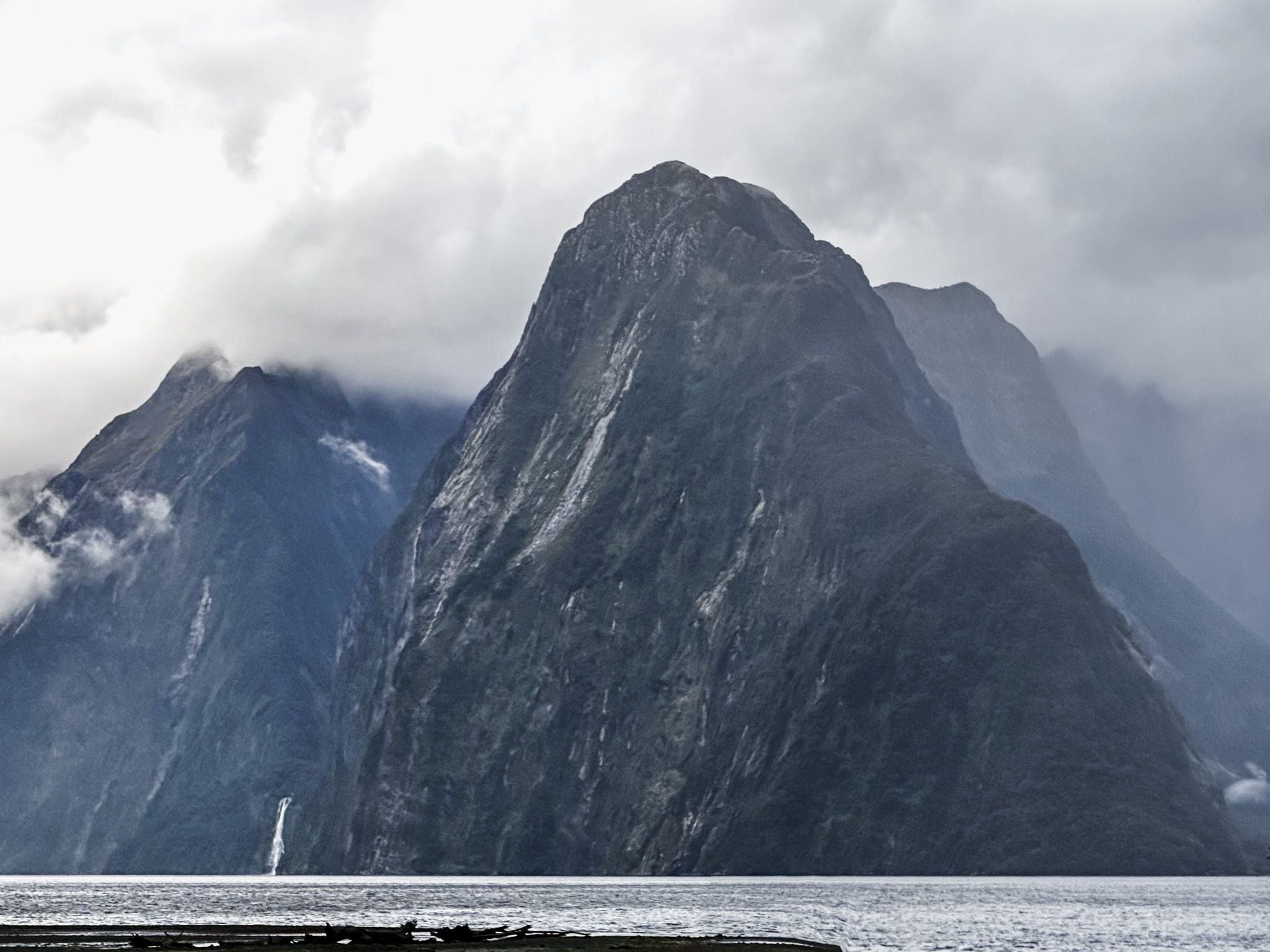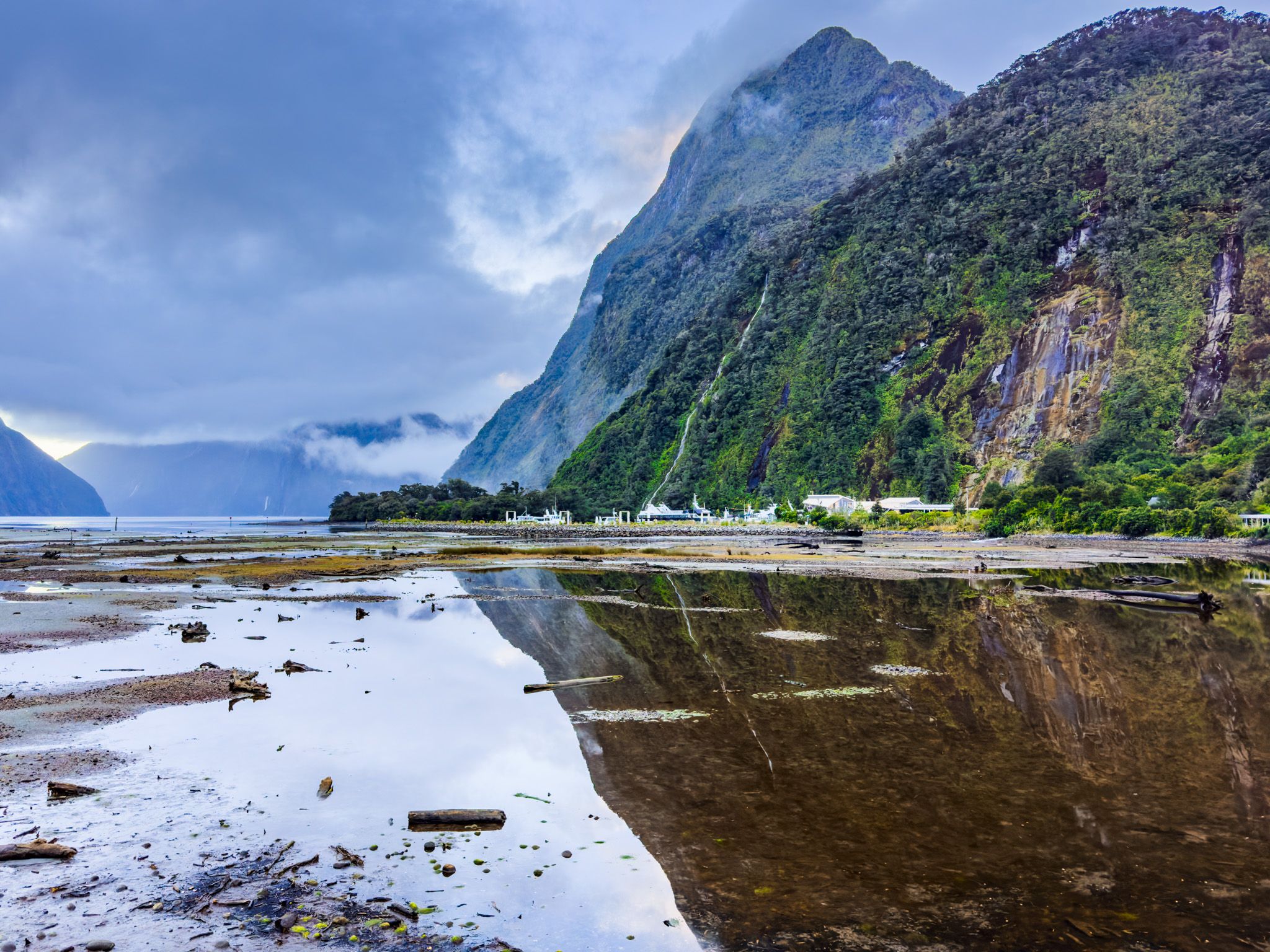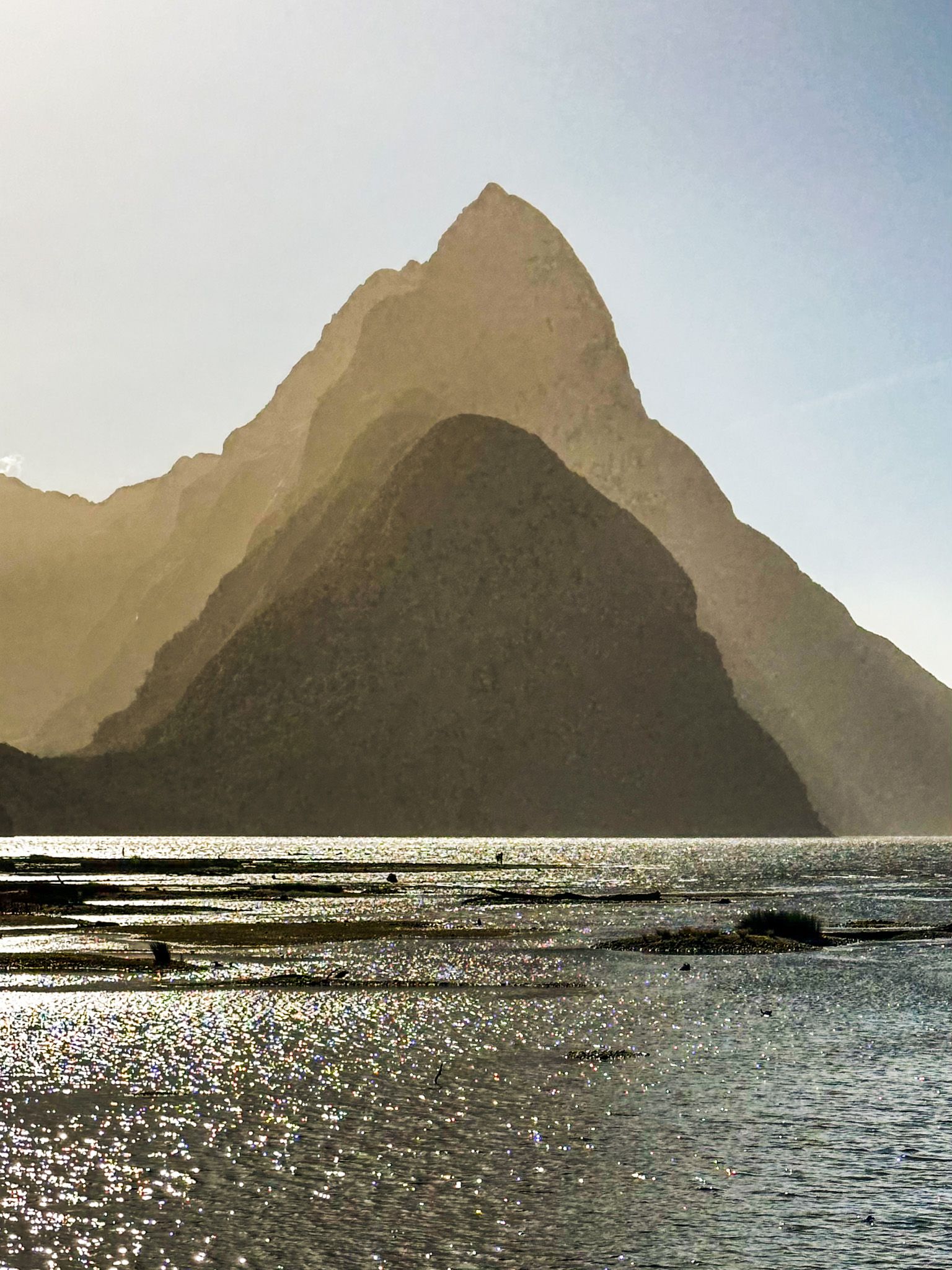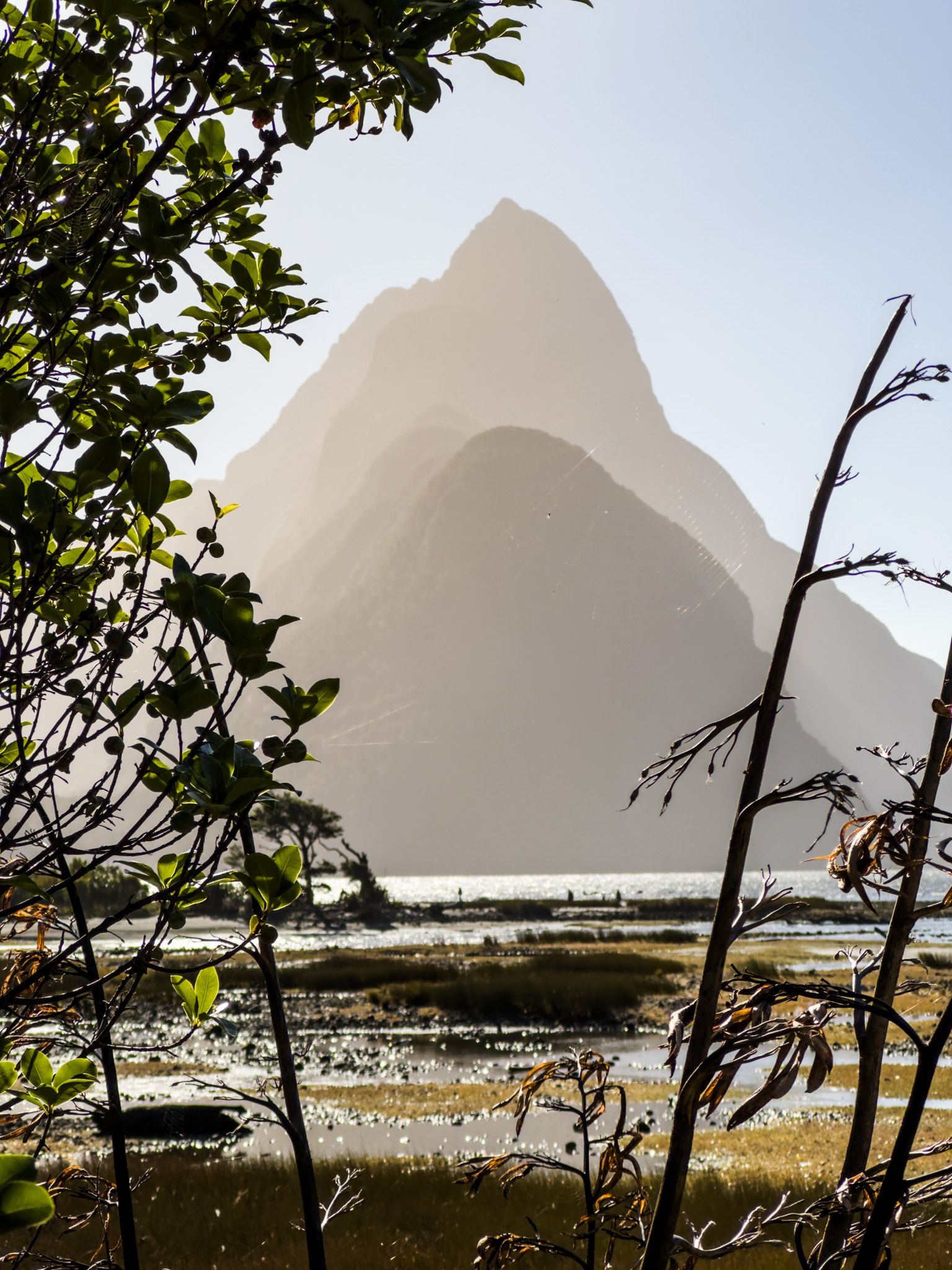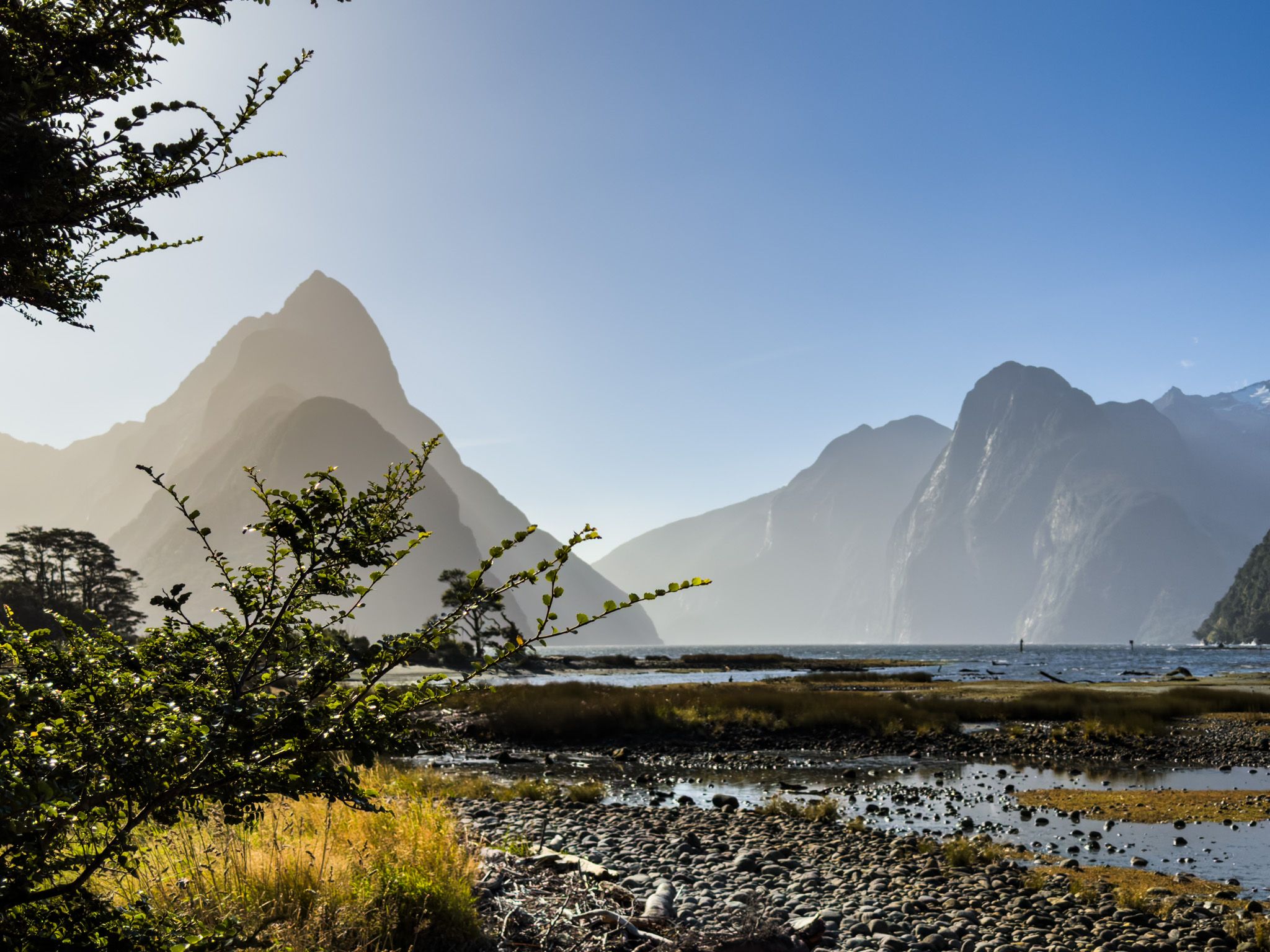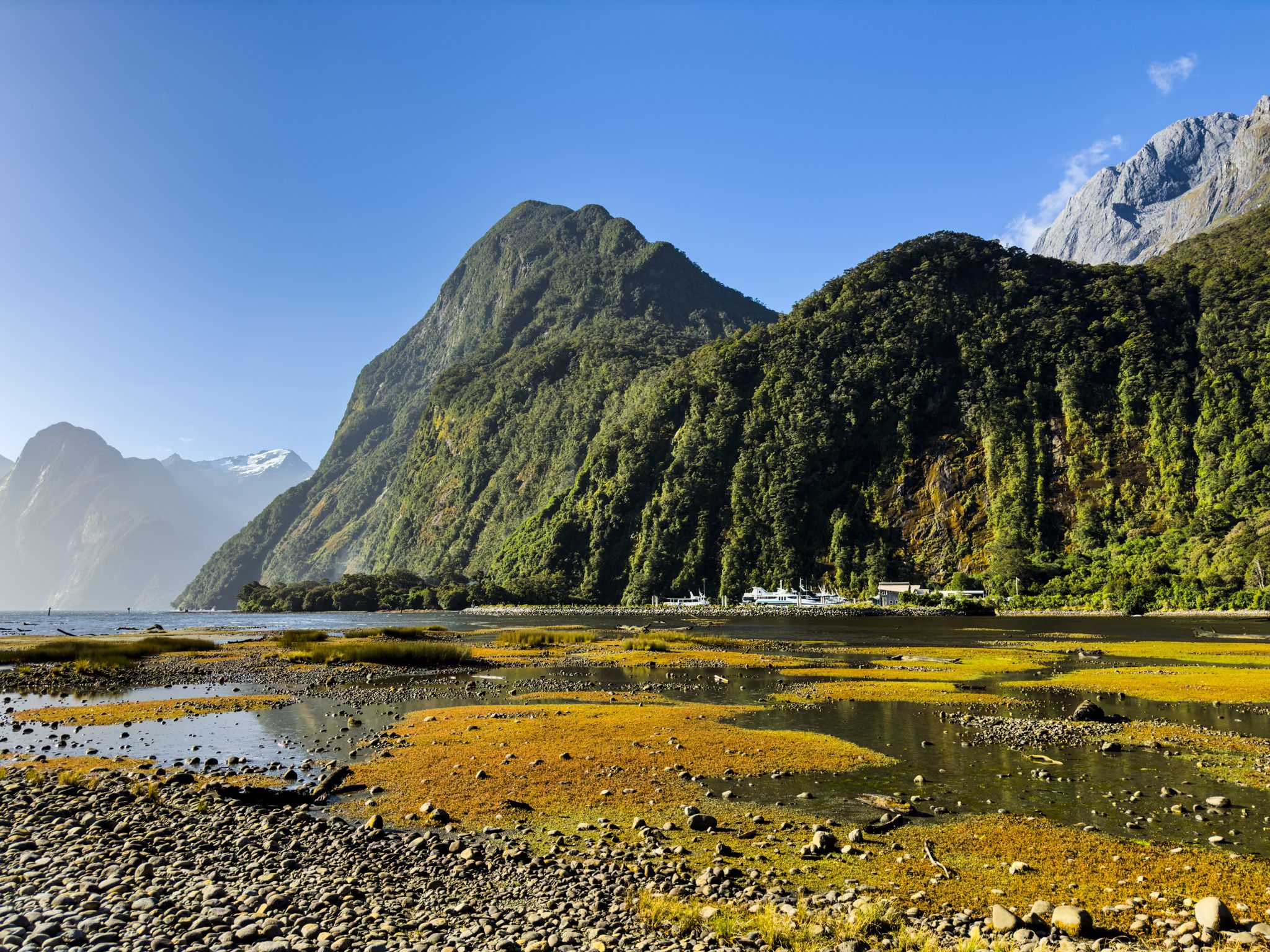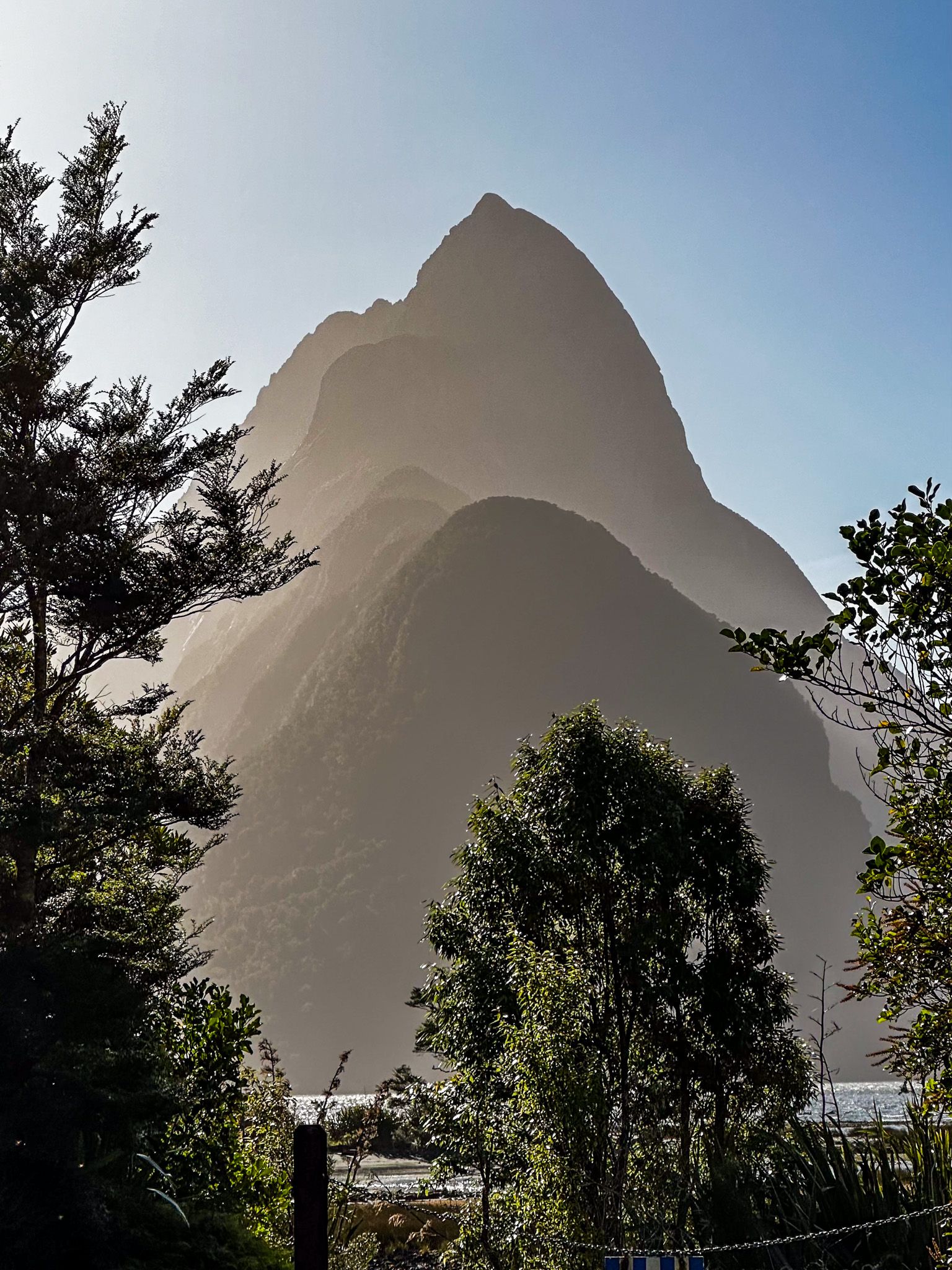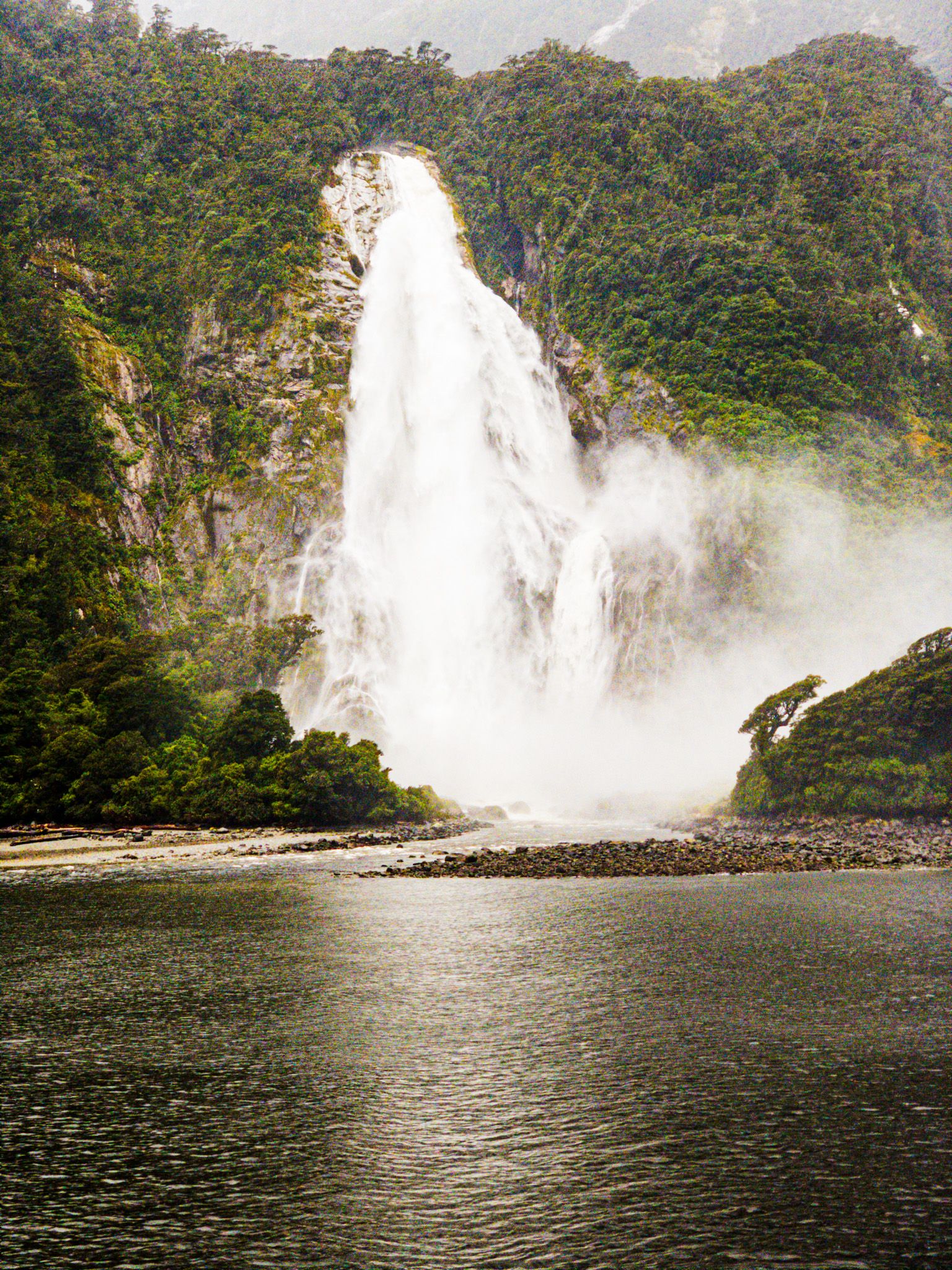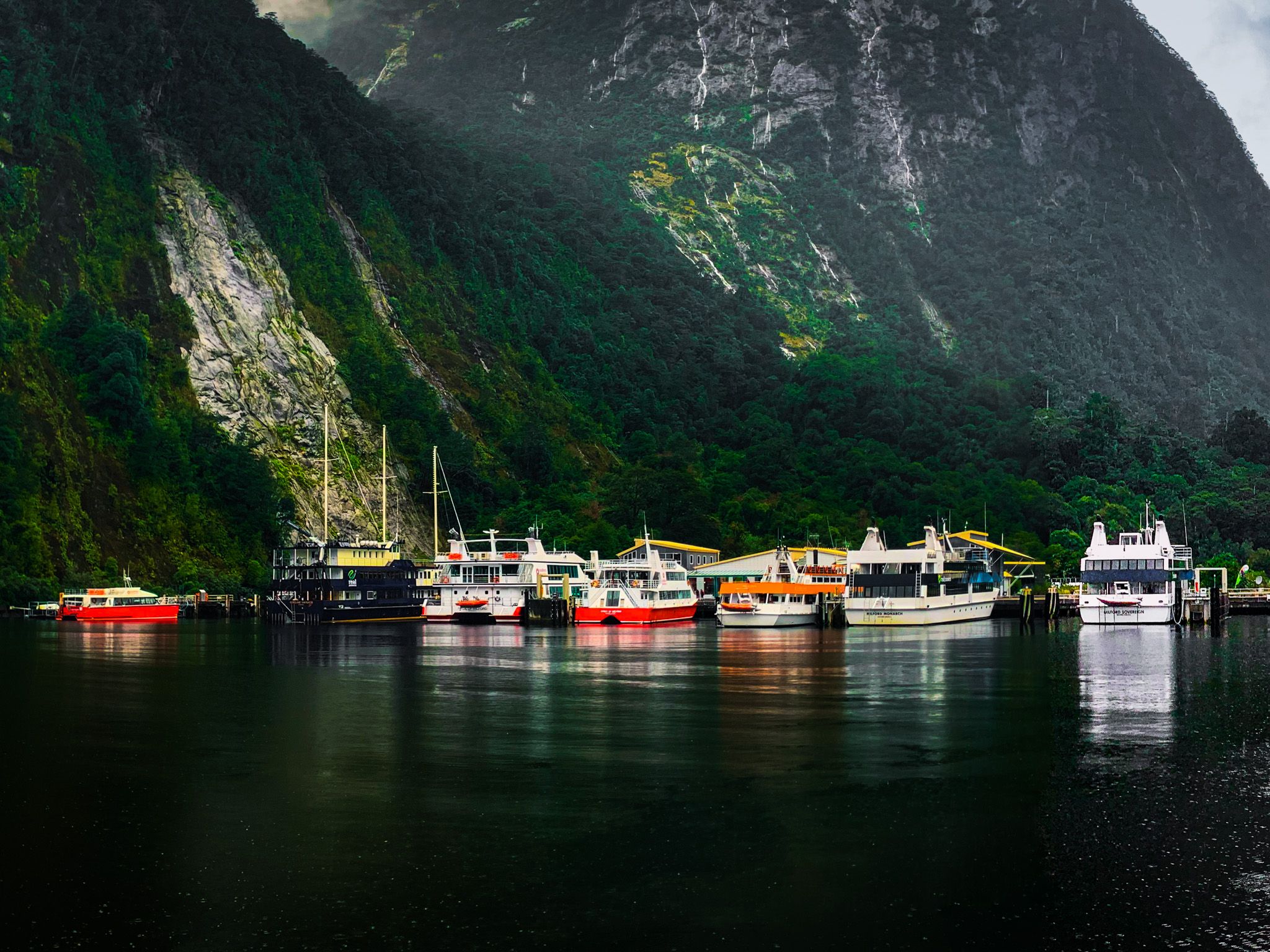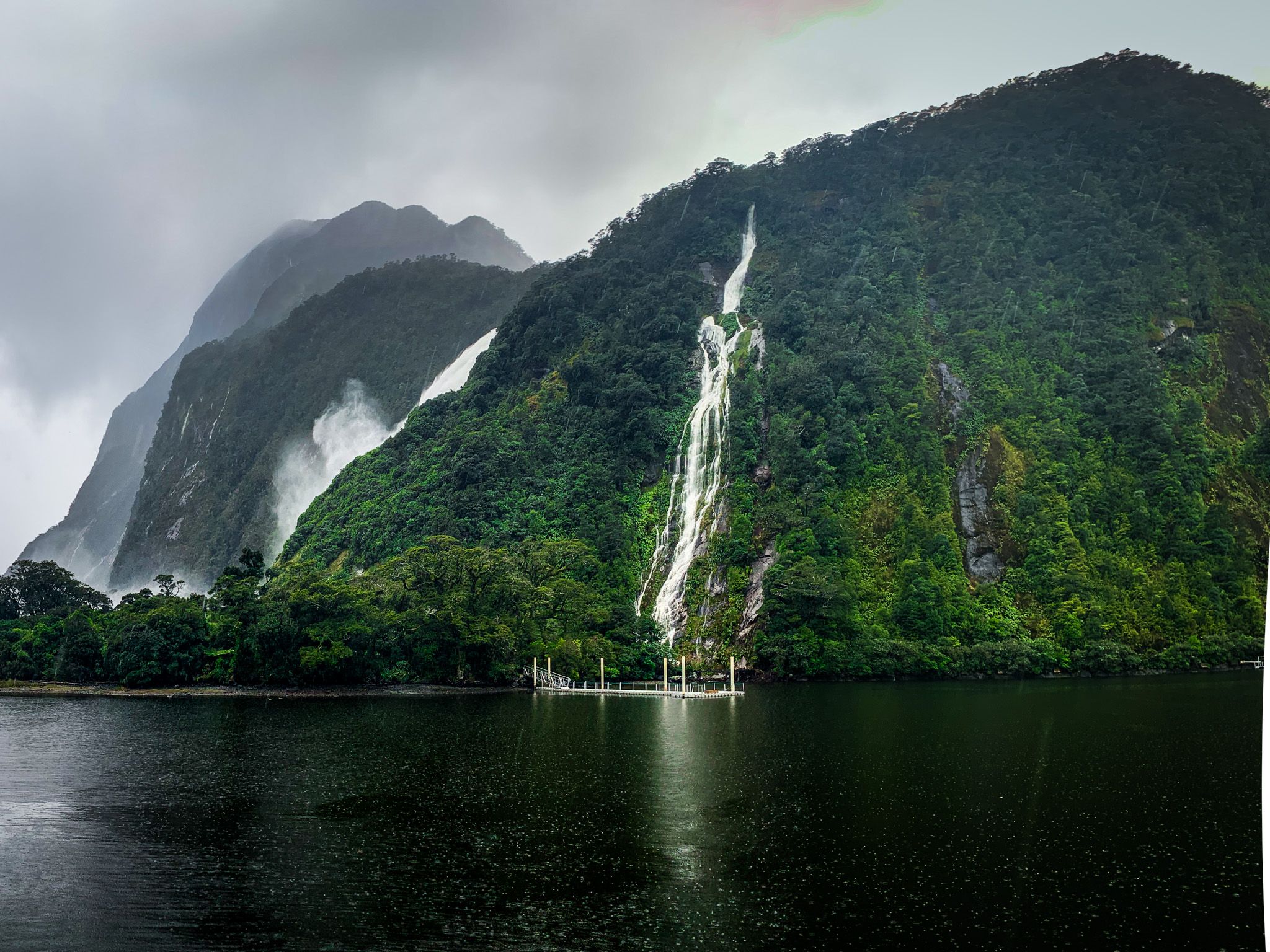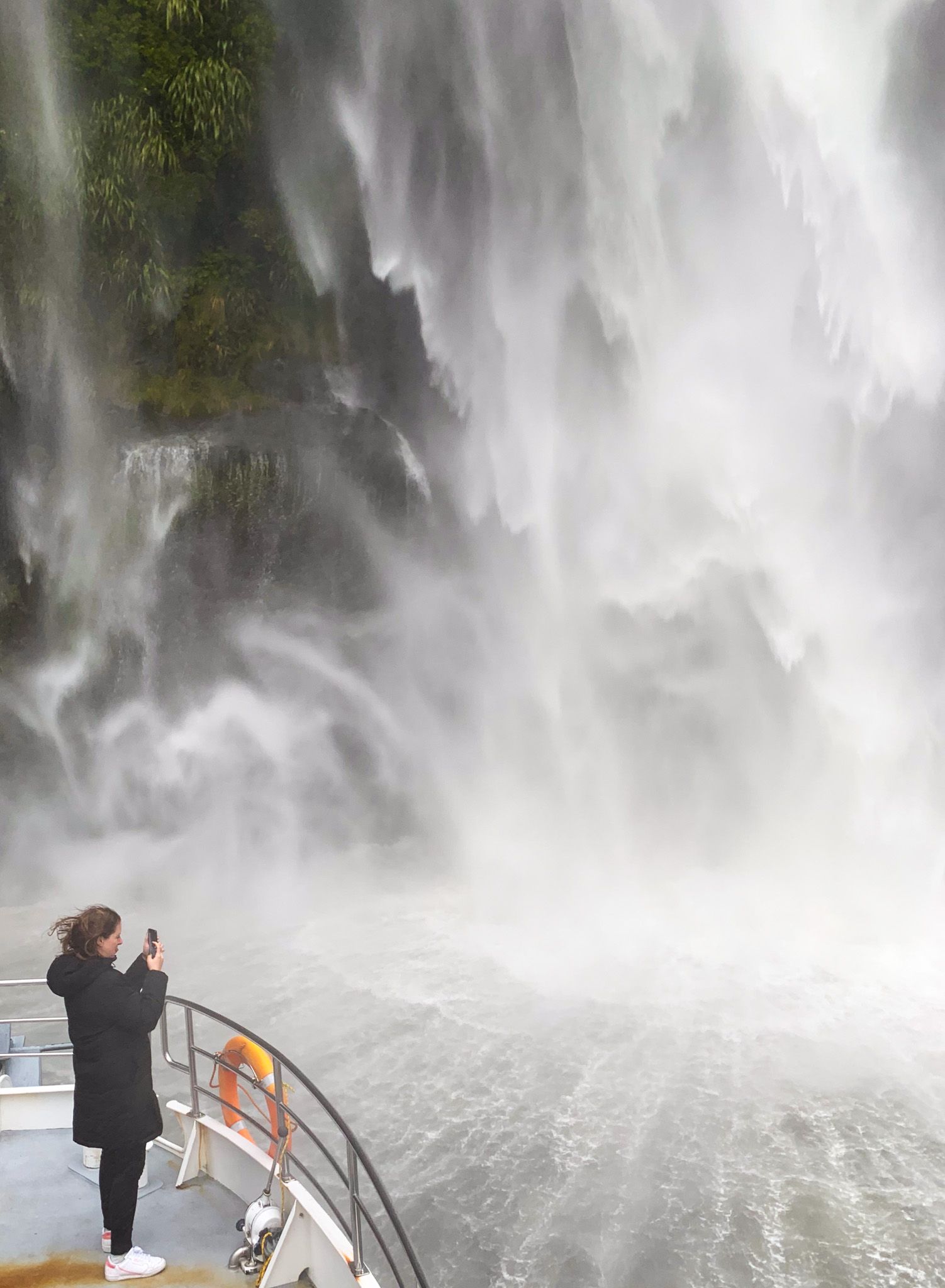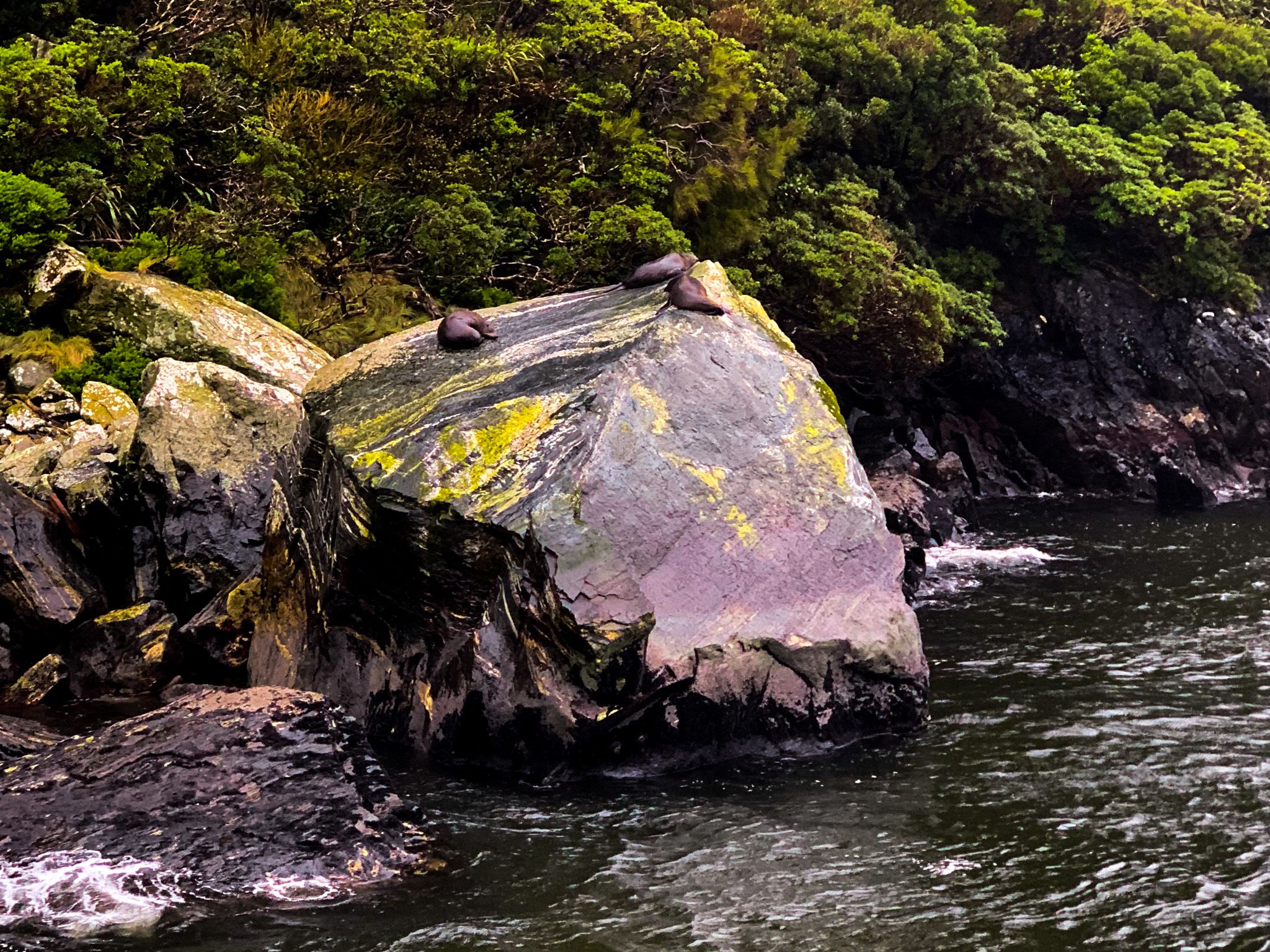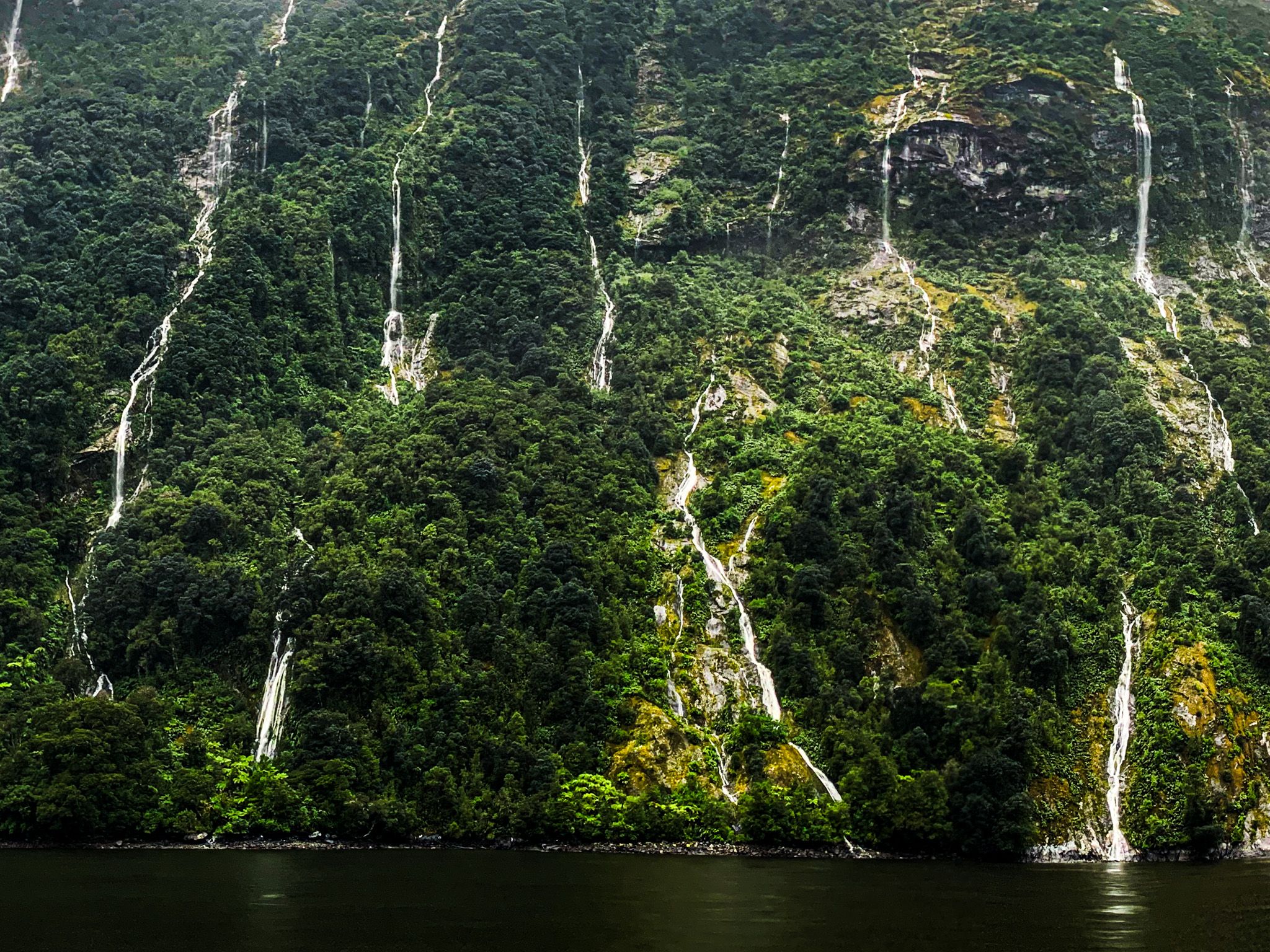Discovering Milford Sound / Piopiotahi
Milford Sound / Piopiotahi is a renowned fiord located on the southwest coast of New Zealand's South Island. Nestled within the vast Fiordland National Park and the expansive Te Waipounamu World Heritage Area, it is a marine reserve and a highlight of any trip to New Zealand.
Spectacular Natural Features
Milford Sound is celebrated for its breathtaking scenery. Stretching 15 km from the coast to the village and wharfs at its southern end, the fiord is about 600 metres wide at its narrowest point. Towering mountain ranges, sculpted by glaciers, flank both sides, with peaks reaching up to 1,700 metres on the south and 1,500 metres on the north. Mitre Peak, standing at 1,683 metres, is the most iconic of these peaks, offering a stunning view from the shore.
The fiord's waters are deep, approximately 400 metres, except at the entrance where a glacial moraine lies just 27 metres below the surface. The unique marine environment is influenced by tannins from the surrounding forests, which darken the water and allow black coral to thrive at just 10 metres below the surface.
Historical and Cultural Significance
The entrance to Milford Sound was first discovered by European explorer James Cook in the Endeavour, although he deemed it too risky to navigate with a sailing ship. In 1823, sealer John Grono explored the area and named the sound after Milford Haven in Wales.
The Māori name, Piopiotahi, meaning "one piopio," was restored in 1998. This name is rooted in a Māori myth where a piopio bird, now extinct, flew into the sound following the death of Maui, seeking immortality for humanity.
Activities and Attractions
Visitors to Milford Sound often embark on boat trips from Freshwater Basin, journeying up the fiord to its end. This two-hour excursion offers views of two permanent waterfalls: Bowen Falls (162 metres) and Stirling Falls (151 metres). Rainfall, averaging 2.5 metres annually, can transform the landscape into a cascade of waterfalls.
Wildlife sightings may include bottlenose dolphins and seals. Other activities include walking the loop track or taking a water taxi across Deepwater Basin for a half-day walk to Giant Gate Falls.
Travel Tips and Accommodation
Milford Sound draws a large number of visitors, with many tour buses making the journey daily. The drive from Te Anau takes about an hour and 45 minutes, while it is 35 minutes from Marion Corner. To avoid traffic, consider visiting early in the morning, mid to late morning, or early evening. Although most people visit as a day trip, there is a private campground and lodge available, but bookings are recommended months in advance, even outside of New Zealand holidays.
Because of overcrowding, the NZ government is considering a fee for foreign vistors, but this has yet to be implemented.
How to Get There
Reaching Milford Sound is a scenic journey in itself. The drive from Te Anau takes approximately one hour and 45 minutes, while it is a shorter 35-minute drive from Marion Corner. For those travelling by tour bus, numerous operators offer daily trips to the fiord. To make the most of your visit, plan your travel times to avoid peak traffic periods.
If it's raining on the day of your visit, go anyway as it's truly astonishing!
